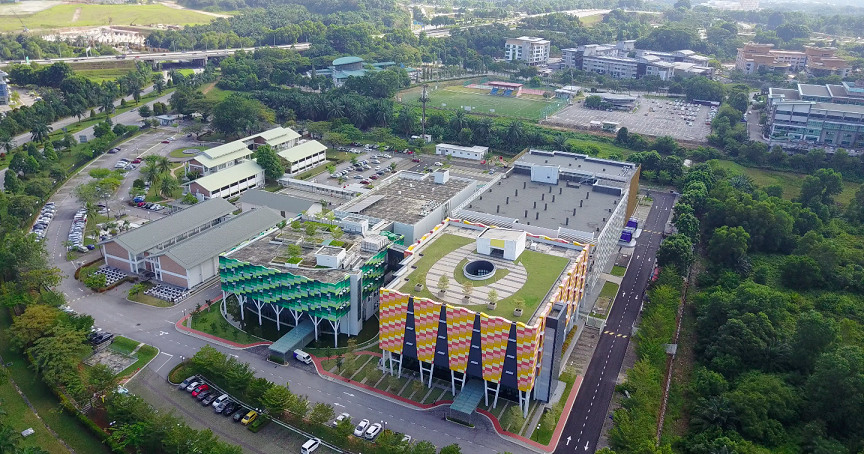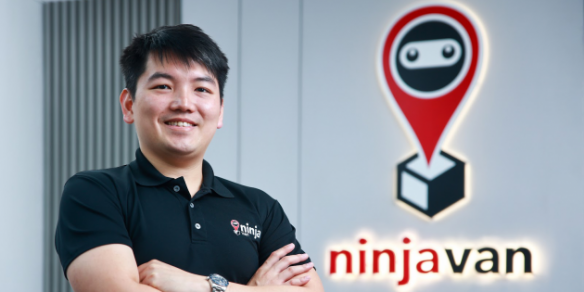NTT harmonises security with human interaction to achieve operational excellence
By Tan Jee Yee January 8, 2020
- NTT commits an SLA of 99.98%, equalling eight minutes of downtime allowed
- Annual “Pull the Plug Test” a sign of confidence from NTT and its clients

THE first thing one would notice in any visit to a data centre is the security. At NTT Ltd’s Malaysia Cyberjaya 4 Data Centre (CBJ4 for short), in which Digital News Asia was fortunate enough to be given a tour of, visitors will have to first face a bollard gate that prevents any sort of barrier-ramming you often see in action movies.
After that, it’s a series of security checks and gates before one even sets foot inside the lobby of the data centre. Access to the server rooms require passing through a security gate that doubles as a confinement unit should a rogue intruder attempt to tail someone with a security pass. Not even accounted for yet is the biometric authentication required to access server rooms, plus the constant CCTV surveillance.
This level of security is only expected, if not required, for a data centre the calibre of CBJ4, one of NTT’s several data centres in Malaysia. But that, of course, isn’t the only high tech marvel of the facility.
A server room in CBJ4 may appear unassuming, but each room is designed to facilitate airflow that ensures optimum cooling to the server racks. Temperature and humidity sensors provide instantaneous feedback to the managing staff.
The UPS system regulates electric power and is able to provide 20 minutes of backup time on full load. The generators here are in 2N redundant configuration (meaning components are duplicated to ensure zero downtime), with enough fuel to run full load for 36 hours.
Yet, beyond the high tech wizardry in place, it’s the human touch that this writer found personally intriguing. At the annexe of the facility – built as part of CBJ4’s expansion, which was completed in 2018 – is a slide which employees and visitors alike can use to descend to a lower floor.
The annexe area contrasts with the cold, more deliberate construction of the server rooms. Here there are conference rooms and the aforementioned slide, which overlooks a garden.
This, as NTT Factory product head Ho Yee Chung tells us, is part of an ecosystem catered towards the whole user experience. Data centre clients don’t just need space for their servers, but areas to conduct corporate presentations and briefings, and spaces where they can integrate their staff with NTT’s staff when the situation needs it.
It’s how NTT is differentiating themselves from their data centre competitors. As Ho puts it: “It’s about harmonising the nature of security and human interaction.” In a place as surrounded by wires, metal and concrete, human interaction may truly be a differentiator.
Operational excellence
That, of course, isn’t the only way NTT is setting itself apart. The global technology services provider, which has more than 140 data centres across 20 countries, offers “confidence” as a selling point.
.jpg) “The confidence of our clients is quite high,” says NTT Malaysia CEO Henrick Choo (pic, right), who adds that NTT’s data centres in Malaysia have never gone down before.
“The confidence of our clients is quite high,” says NTT Malaysia CEO Henrick Choo (pic, right), who adds that NTT’s data centres in Malaysia have never gone down before.
“It’s hard to operate a data centre for 20 years without going down. Our strength is not just the build – everyone can build the best data centres. It’s the operations. It’s our operations that people will have confidence in,” he says.
Choo says that “operations” here entails many things – security, access control, and harmonisation. In the data centre industry, the Service Level Agreement (SLA) will always be at 99.9% -- which equals a monthly downtime of no more than 45 minutes allowed. NTT MSC, with optimum effort, offers an SLA of 99.98% -- monthly downtime of no more than eight minutes allowed.
This, as Ho says, is a differentiator in terms of NTT’s operational ability and capacity.
Another thing that adds to NTT client confidence is NTT’s annual “Pull-the-Plug Test”. NTT head of Infra Sales CK Sim explains that every year, NTT will disconnect the incoming power to the data centre (provided by Tenaga Nasional Bhd) and allow it to run with the generators. This is to simulate the centre’s ability to keep running in the event of a disaster.
Sim says that a lot of data centres commit to the 99.9% SLA, but don’t necessarily provide pull-the-plug tests. The test is important, he says, because data centres are in a state of constant upgrade, as upgrades happen with each customer they on-board.
“When these upgrades happen, how do you ensure that the SLA is compliant? This pull-the-plug test is one of the ways we can certify that,” he says. “It gives the customer confidence that whatever upgrade we conducted, it will comply with the SLA.”
Choo adds that the data centres in Malaysia also go through stringent auditing from NTT’s headquarters in Japan. It’s a strict process – if, for instance, the Malaysian data centre claims to service its air-conditioning every three months, the audit will ensure that it’s done to the dot. “That’s how you maintain the data centre. Operational excellence is our strength,” Choo reiterates.
Preparing ahead
It’s not to say that the building itself isn’t up to par with the rest. NTT’s data centres are designed with a double brick wall system and aluminium louvers, which is meant to further insulate the building envelope, thus minimising power conversion and cooling heat exchange losses. In short, it helps keep the cooling system in the data centre operate efficiently while reducing the carbon footprint.
Their existing data centres are compliant with Green Building Index (GBI) and Leadership in Energy and Environmental Design (LEED) certifications. For one, the architecture of the data centre office buildings allow for maximum diffused sunlight to enter the building’s inner space, reducing energy consumption cost.
Their data centres also adopt rainwater harvesting systems where the roof serves as rain catchments and filters, with the water stored for further use (if not distributed to the gardens below). Seven percent of the entire lighting consumption is taken from solar energy.
Malaysia’s journey into the digital economy means that data centres are quickly becoming a vital part of the country. Driving things further is the recent set of guidelines defining Risk Management in Technology (RMiT) announced by the Malaysian Central Bank, which makes security a crucial consideration as they’re now part of the bank’s information infrastructure, systems and data. As such, purpose-built data centres will have increasing demand, and NTT needs to be ready for it.
This is coming in the form of the upcoming CBJ5, NTT’s fifth data centre, which is set to be completed in July 2020. CBJ5 boasts a Tier 4-ready facility, alongside flexible and scalable power and cooling solutions, plus the aforementioned SLA.
Sim says that the capacity of their other data centres have, in average, achieved 90% capacity. Building a new facility only makes sense. Choo adds that the RMiT is truly a driving force, as on-premise data centres cannot achieve the kind of requirements that data centres like NTT’s can. “It creates an immediate demand for purpose-built data centres,” he says.
Since the RMiT announcement, Choo says that NTT has received a lot of inquiries, not just about their data centres, but how they can help provide assessments of an organisation’s data needs in the form of a gap analysis. “We will give them advice and plan for them.”
At the same time, with the government driving lower bandwidth prices in Malaysia, Choo is hopeful that larger tech players, especially over-the-top (OTT) media services like Netflix, will see the country as data centre potentials. If anything, Choo notes, Malaysia’s data centre pricing has been competitive to begin with.
That, however, requires competitive bandwidth pricing as well as diversity in connectivity – aspects data centre providers have no control over. But there is potential there – one NTT is ready to capitalise on, and one the country could do well to take note of.
Related Stories :


